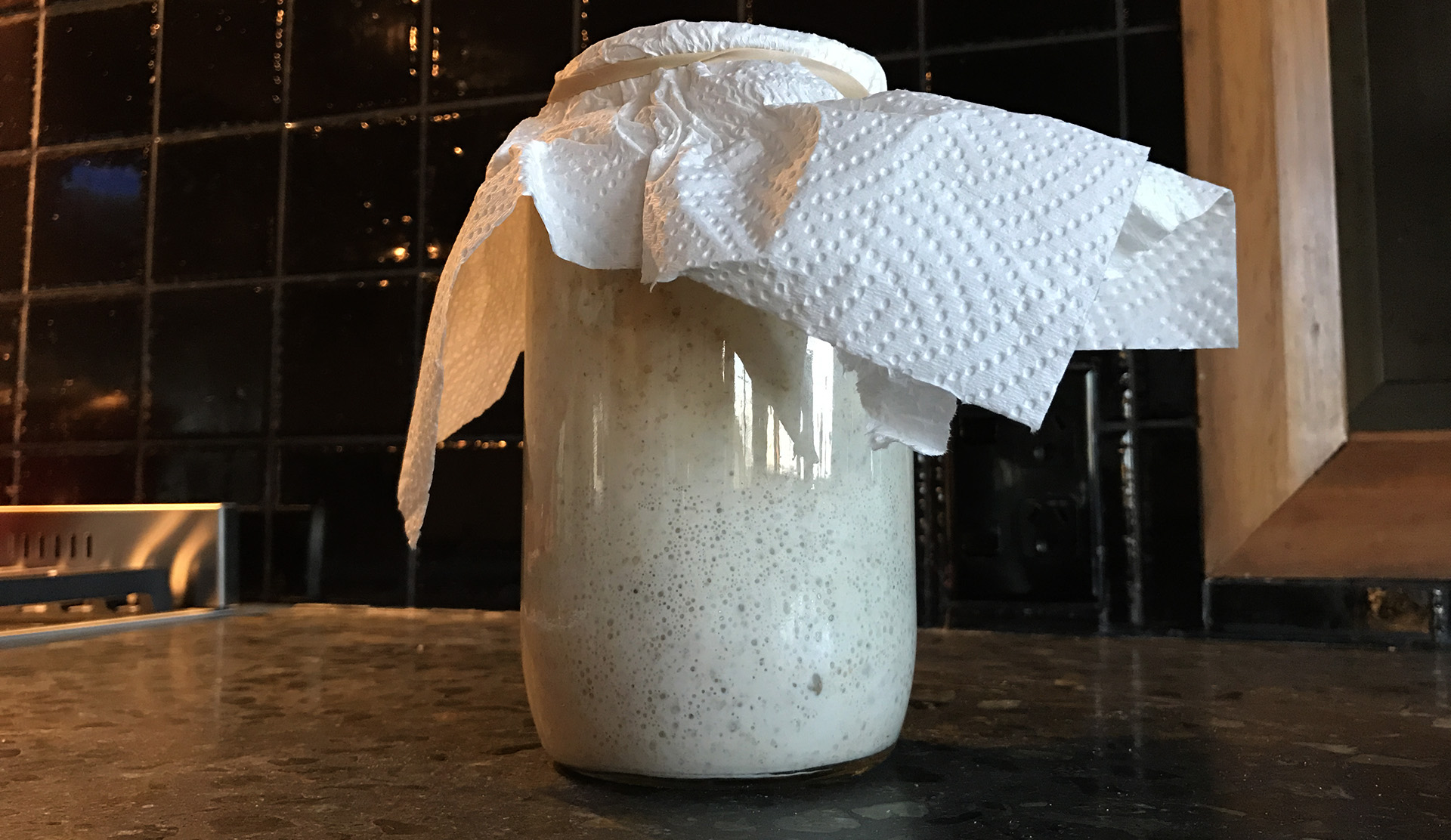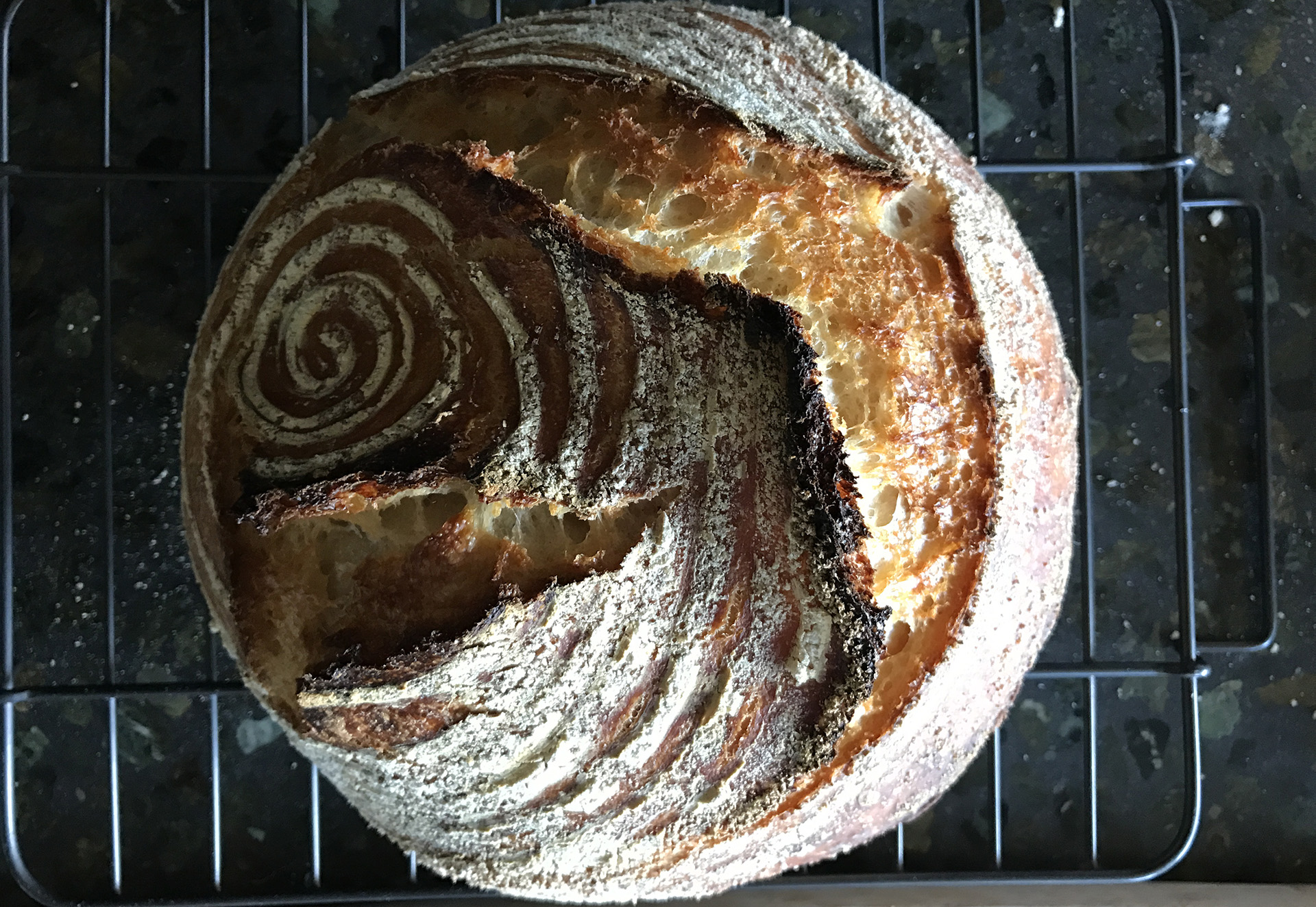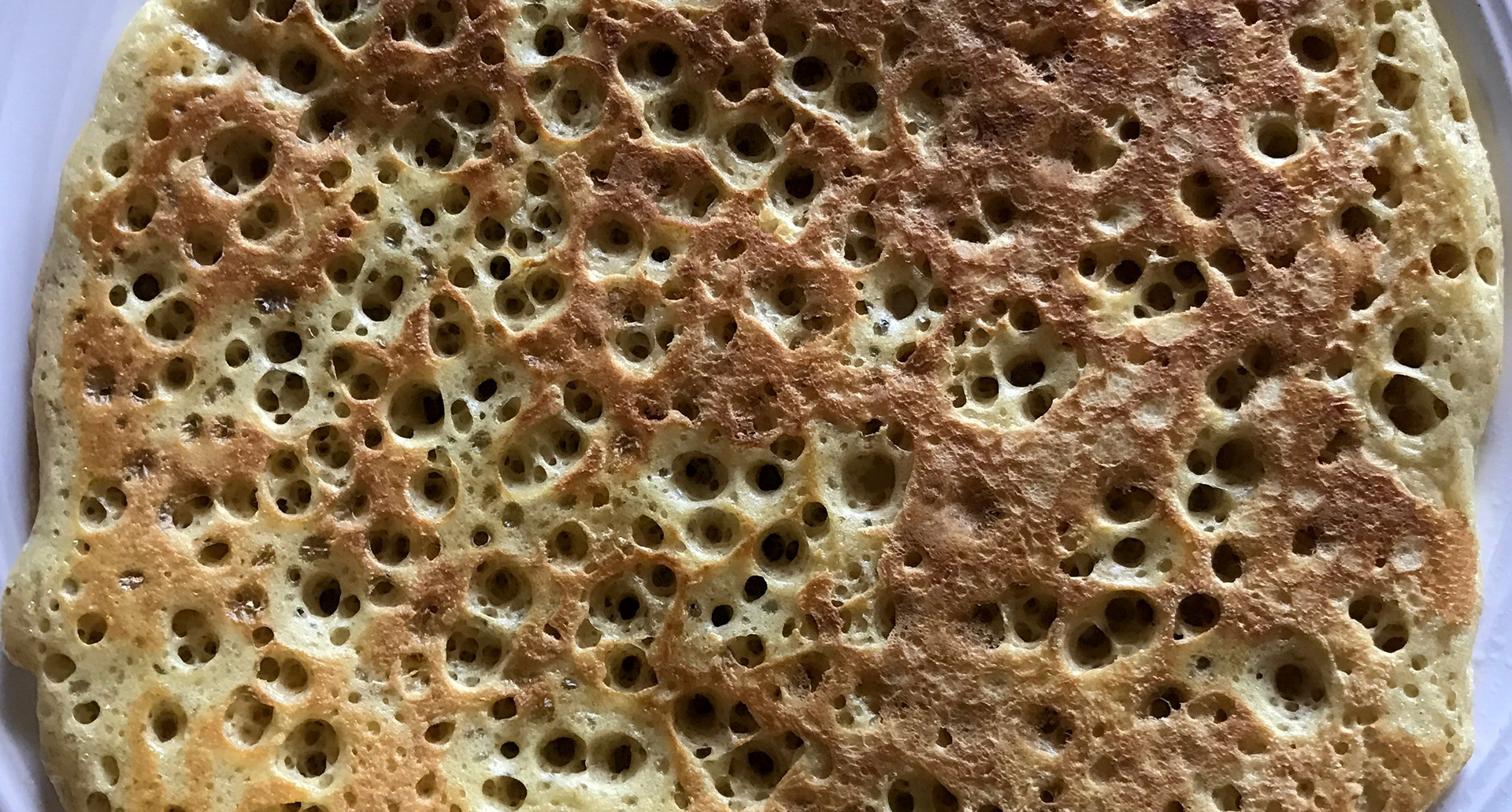I’ve been baking bread on and off for a few years now. It’s a satisfying and rewarding thing, and doesn’t need to take very much time out of your life. It’s fun to experiment with different methods and recipes, and the results can be tastier, fresher, and more interesting than anything you could buy.
So I thought I would share some of my techniques and recipes, derived from numerous online sources and my own experimentation.
I only bake sourdough bread these days, which is created using a ‘wild yeast’ starter and no instant yeast. So I only need 3 ingredients: flour, water, and salt. There’s all sorts of complicated and sometimes crazy rituals around creating your own sourdough starter out there, and you can even buy starters online. However I’ve created my own twice now and both times found it to be relatively straightforward, and had a viable starter for baking bread within 7-10 days.
It’s an interesting process, basically you are attempting to catch and breed wild yeast, which will either come from the air around you, or more likely from within the flour you are using. It’ll start slow, but within a few days you’ll have billions of yeast organisms living in your jar, devouring your flour and releasing CO2. Then you can take out a spoonful and make good tasty fluffy bread, then feed it some more flour and water for next time.

You will need:
- One, or better two quite wide glass jars, tall enough to handle a couple of cups of liquid, but not so tall that a spoon can’t easily reach the bottom while stirring. A second jar is useful so that after a couple of weeks when the first one gets caked with starter, you can transfer to the clean one and soak the dirty one for a day.
- Digital scales. These are pretty cheap, and really a prerequisite for consistent bread baking. I held off on getting these for too long, just do it.
- White flour, preferably high grade/high protein organic/wholemeal etc. But you can probably use any wheat flour.
- Ideally some rye flour too. I think that helps kick start things, but probably isn’t really necessary.
- Paper towels, a rubber band.
The method:
Put 10g of rye flour and 40g of white flour in a jar (or just 50g of white flour if you don’t have rye). Add 50g of cold to warm water. I’ve found that the water temperature doesn’t matter much, it just shouldn’t probably be freezing or hot. Maybe 15-35°C/60-95°F.
Stir until it’s combined, then cover. I use a paper towel or tissue paper secured with a rubber band. Use whatever porous material you like to cover it, but do not use plastic wrap or a screw on lid. You don’t want insects or whatever getting in or it drying out too much, but it needs to breathe. Leave somewhere out of sunlight, at room temperature.
24 hours later you want to add the same again, 10g of rye flour, 40g of white flour, and 50g of water, to double the amount of starter. Stir again, cover with paper and leave same place as before.
Now 24 hours later, you’re going to take roughly half of the starter out and throw it away. It doesn’t need to be precise, though you’re probably better to throw away more rather than less. I think I tend to underestimate how much is left, and if you’re only left with 50g that’s fine.
Once you have thrown away that half or more, add 100g of new stuff again, 10/40g flour, 50g water.
24 hours later, do the same again. Remove half, add 100g more.
Keep doing this daily until you start to see it bubble up and more than double in size between feeds. Feed it for a couple more days and you’re good to bake some bread with it.

Tips:
- Once you have a viable starter you keep it alive and improve it by continuing to feed it roughly every 24 hours.
- It will take a few more weeks for it to really start making fantastic bread. You can still add a little instant yeast to loaves during this time if you like.
- Just before it starts bubbling up it might smell bad, like stinky socks or vinegar. That’s fine, don’t throw it away, it’ll probably take off and smell fine in a day or two.
- It doesn’t have to be fed exactly every 24 hours. If you have to leave it for 2-3 days, you might just get a bit of mould or funny smells, and it might take a bit longer to get going. That doesn’t matter, just scrape off what mould you can, feed it and keep going.
- It’s messy business. I’ve found you should always rinse off all the starter from spoons and benches/sinks immediately, just with cold water. Paper towels are very useful. I wipe the top of the jar with a paper towel after each feed, and change the jar every few weeks.
- You can refrigerate your starter after a feed to slow down the process, and then only feed it once a week or so. You don’t have to though, my current starter is a few months old and has never been refrigerated, I just bake with it most days and try to remember to feed it daily if not baking. Missing a day or two of feeding doesn’t really matter. A week or more might kill it. I killed my previous starter by leaving it in the fridge unfed for over a month.
- This aims to create a starter which will provide 100g daily for baking with. This is what I use to bake one loaf of bread or two large pizzas so works out great. If you need more starter you can always feed it more and/or more often.
- In case it still isn’t clear, none of this needs to be in any way exact. Sometimes I add 200g of flour/water because I want more. Sometimes I feed twice a day, sometimes I skip a day. It’s fine. Even the 50/50 flour to water ratio doesn’t matter too much. I think aiming to have a starter towards the final bread hydration is good, and dry starters seem more stable. But too dry is hard to work with. 50/50 is about as dry as you can get without it getting difficult to stir.
Sourdough starter pancakes
You can also create amazing pancakes with sourdough starter (once it’s viable). They’re dairy free too. All you need to do is take some quantity of starter and double or triple it every 12-24 hours until you have enough. Then when you have what you think is enough (about 800g does our family) you add enough water to make a thin batter, then about 1 egg, 1/4t salt, 1/2t baking soda per 400g. Stir it up and watch it double in size as the baking soda reacts with the lactic acid in the starter, then fry them in butter or oil or whatever you like.

I’ll work on part 2, how to bake bread with this and aim to post it within a week, in case anyone rushes off and gets a starter going straight away :)